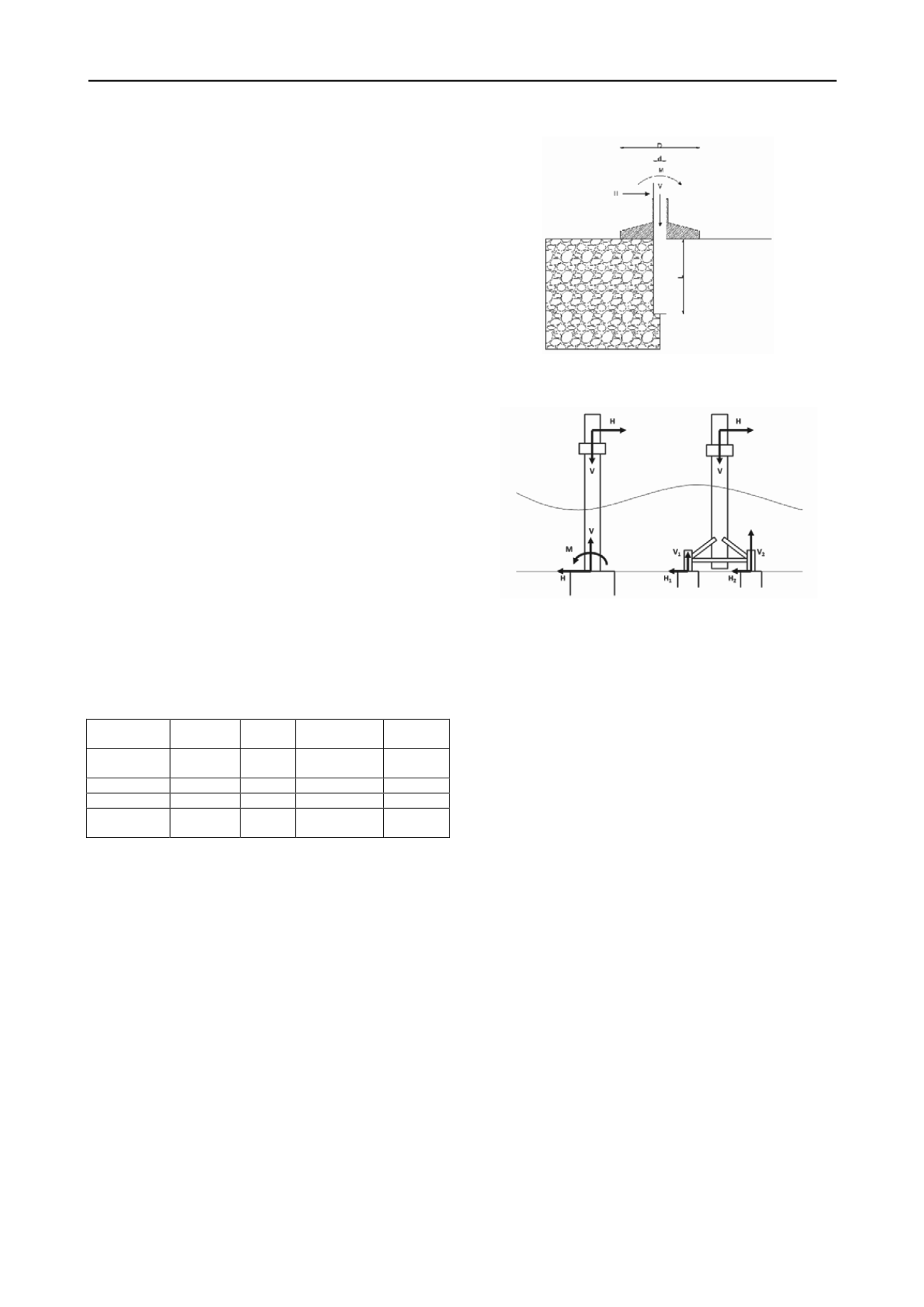
2296
Proceedings of the 18
th
International Conference on Soil Mechanics and Geotechnical Engineering, Paris 2013
developed and refined over multiple phases of geotechnical and
geophysical investigation. The authors conclude that a formal
approach to risk management with staged investigations and
early appointment of the foundation design team is the best
practice.
2.2
Wind turbine performance
A wind energy project involves several disciplines within civil
engineering. The complex interaction between the turbine and
the supporting structure governs the dynamic behaviour.
Analysis is required of the structural modal parameters that
influence fatigue of a wind turbine. Indeed, continuous
monitoring of modal frequencies and damping ratios during the
operational life of a wind turbine can provide early warning of
the onset of structural damage.
Damgaard et al. (2013) assess instrumentation data from 30
offshore wind turbines in the North Sea. The measured modal
frequency and damping ratio are found to vary with time.
However, the observed magnitude and pattern of change with
time might result from scour erosion or backfilling around the
monopile structure. This highlights that the dynamic interaction
between an operating turbine and the supporting structure may
be affected by changes with time of the local seabed level,
something that could be reduced by scour protection.
2.3
Foundation systems
The power capacity of a wind turbine, typically in the range
2MW to 5MW, but increasing toward 10MW in future,
determines the required height above mean sea level and the
maximum horizontal and vertical loads to be supported.
Deeper water increases the moment arm for both wind and wave
loading and often signifies larger design storms. There are
many novel features to the required foundation engineering as
discussed in papers to this session, Table 2.
Table 2. Papers on Foundation Systems for Offshore Wind.
SINGLE
LOAD
CYCLIC
LOAD
Shallow
Foundation
Arroyo et al
A
Monopile
Roesen et al
E.1g; A
Caisson
Kim et al
E.c; A
Versteele et al
A
Hybrid
(pile/caisson)
Arshi et al E.1g; A
E
= Experimental (E.1g lab floor; E.c centrifuge);
A
= Analysis
In brief résumé, shallow foundations and monopiles
generally provide efficient support for wind turbines. However,
these foundations are less effective when the moment load to be
resisted increases due to larger turbines and/or deeper water.
One approach is to improve the capacity by combining a
monopile and shallow foundation, Figure 1. Alternatively, a
caisson can support combined vertical, horizontal and moment
loading at seabed level. Three or four caissons may be
combined to support a structure where greater load carrying
capacity is required, Figure 2.
The issues for foundation engineering discussed in the
papers include: (1) the impact of the loading path and loading
direction on safety factor and use of a single failure envelope;
(2) improved performance by combining a shallow foundation
and monopile; (3) the incremental displacement of cyclically
loaded monopiles; and, (4) assessment of simultaneous pore
water pressure generation and dissipation for caissons under
storm loading.
(Arshi et al, 2013)
Figure 1. Hybrid Monopile and Shallow Foundation.
(Versteele et al, 2013)
Figure 2. Monopod and Multipod Foundations.
2.3.1
Bearing capacity analysis
The assessment of bearing capacity for offshore wind turbine
foundations differs from onshore practice in several respects.
The issues include: (a) separate correction factors in analysis for
shape, depth, load inclination and eccentricity that are
cumbersome and prone to calibration error; (b) use of separate
partial factors on loads and resistances as in DNV-OS-J101
when the difference between favourable and detrimental effects
can be subtle; and (c) simultaneous application of two major
horizontal loads from wind and wave acting in separate
directions. Arroyo et al highlight these issues and question the
suitability of the conventional design approach for offshore
wind foundations (Arroyo et al 2013).
A more satisfactory framework for capacity checks would be
through failure-envelopes as detailed in the paper. Arroyo et al
examine a synthetic design example to illustrate their case using
the geometry of a Thornton Bank GBS and a set of derived
loading parameters, Figure 3. The complex interaction between
horizontal and moment loading, and the impact of different
directions for wind and wave loading are illustrated by the
authors using Figure 4 and the results in Table 3.
It is conventional to increase both detrimental loads at the
same time, so that the load increment causing the limit to be
reached is in the same direction as the reference combined load.
The authors consider the cases where only wind or wave
loading is increased. Such analysis might be used to assess the
impact of any error in the assessment of those loads. Because
of the greater influence on moment of wind loading, the
analysis shows that an underestimate 21% (in this case) in the
wind load would be sufficient to cause failure compared with an
underestimate 50% for the wave load, Table 3.
Arroyo et al (2013) conclude that failure envelopes offer a
powerful framework for analysis of shallow foundation
capacity; the approach is particularly well suited for offshore
wind structures that require refined design in the face of
considerable uncertainty.


